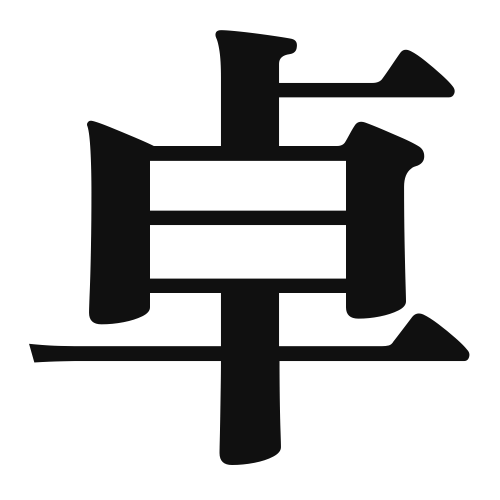1. Overview of Meaning
The kanji “卓” (taku) generally means “table” or “desk.” It can also imply excellence or outstanding quality in various contexts.
2. Formation and Radical
Formation of the Kanji: The kanji “卓” is a phonetic-ideographic character (形声文字). It combines the radical for “table” and a phonetic component that suggests its pronunciation.
Radical: The radical for “卓” is “卓” itself, which relates to the concept of a table or platform.
3. Examples of Usage
Common Words and Phrases: Some frequently used words that include “卓” are:
- 卓球 (takkyuu) – table tennis
- 卓越 (takuetsu) – excellence
Example Sentences in Daily Conversation:
- この卓球の試合はとても面白いです。 (Kono takkyuu no shiai wa totemo omoshiroi desu.) – This table tennis match is very interesting.
- 彼は卓越した才能を持っています。 (Kare wa takuetsu shita sainou o motteimasu.) – He has outstanding talent.
4. Synonyms and Antonyms
Similar Kanji: A similar kanji is “優” (yuu), which means “superior” or “gentle.” While both imply a sense of excellence, “卓” is more focused on physical or metaphorical tables and platforms, whereas “優” emphasizes qualities of gentleness and superiority.
Opposite Kanji: An antonym for “卓” could be “劣” (retsu), which means “inferior” or “substandard.”
5. Cultural and Historical Background
Relation to Japanese Culture: The concept of “卓” is significant in Japanese culture, especially in traditional settings where tables are used for tea ceremonies and meals.
Proverbs and Idioms: One common idiom is “卓越した人は、常に学び続ける” (Takuetsu shita hito wa, tsuneni manabi tsuzukeru), which translates to “An excellent person always continues to learn.”
